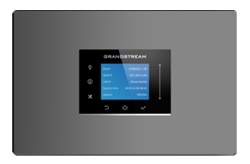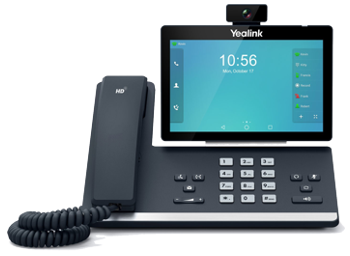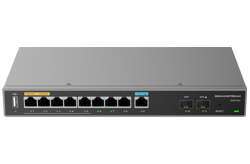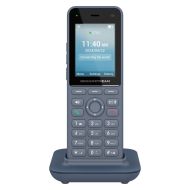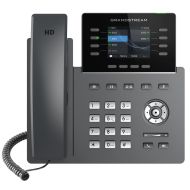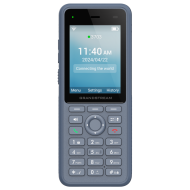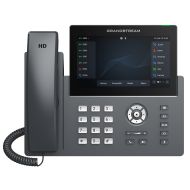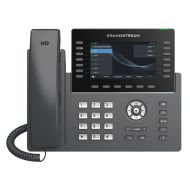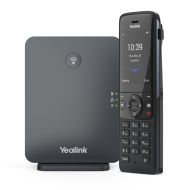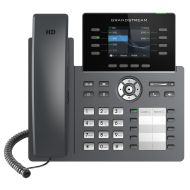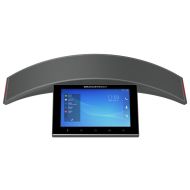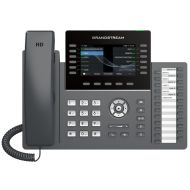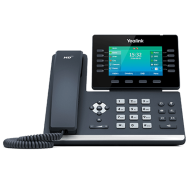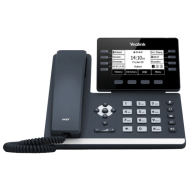YeaStar S20 Small Business IP-PBX Phone System
The YeaStar S20 IP-PBX Phone System Specs
This IP-PBX is an excellent start-up telephone communications stand-alone solution for small business. This model is a low cost, entry level telephony with both analog and VoIP / SIP calling features.
The YeaStar S-Series systems are based on modular design, which allows you to create your own phone system package, based on Your needs, with FXO (Analog Extension ports), or FXS (Analog Telephone Line Ports). Each port set can be enabled by purchasing separate cards based on your specific needs!
Also available on special order are: BRI ports, and GSM/CDMA/3G/4G channel ports for mobile connection options.
Small Business IP-PBX YeaStar S20 details
Great for most small offices, home offices (SOHO), small-to-medium enterprise (SME), retail outlet stores and anywhere you need 1 to 20 user extensions for day to day calling operations.

VoIP Trunk Channels come standard with 20 trunks available right out of the box.
The great thing about the modular design is: it's flexible, and can grow with your business needs depending on different situations. You're not locked into specific hardware capacity constraints!
If you need to add two analog telephone lines, simply add the optional O2 Module (FXO port card), or two modules to add four analog port activation. Or, mix 2-FXO ports with an O2 Module, and 2-FXS ports (analog extensions) with a S2 Module to create a split port use system.
Of course, if you're only going to use VoIP / SIP Trunking telephone service on the YeaStar S20 - you don't need to spend the extra on adding modules you won't need.
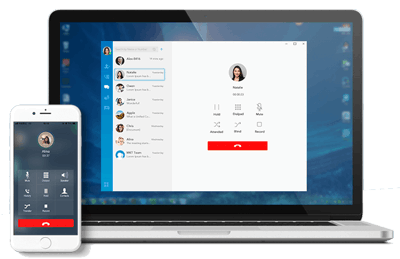 YeaStar S20 Unified Communications
YeaStar S20 Unified Communications
Communicate whether on the road, in a hotel, or out for lunch - ease of use and flexible!
Not only do you have access around the office, or at remote locations like home or satellite branches using cordless and desk top IP phones - the YeaStar Linkus Mobile and PC App allows you to connect anywhere, view colleagues' presence status and synchronize data!
Use one extension for yourself or other workers - and communicate across several devices.
The Linkus App also synchronizes call history and corporate directory information - AUTOMATICALLY.
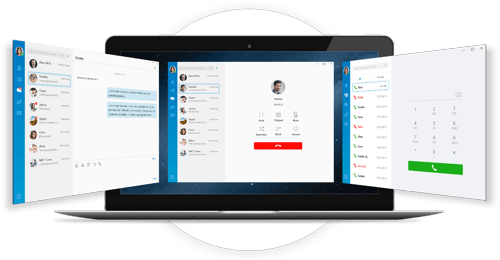 LinkUS Mobile Device App includes: HD VoIP Calls, Presence information, Company directory listing, Instant Messaging, Conferencing, SRTP Secure Media, Advanced call handling.
LinkUS Mobile Device App includes: HD VoIP Calls, Presence information, Company directory listing, Instant Messaging, Conferencing, SRTP Secure Media, Advanced call handling.
Check your voicemails and call in/out of the office main PBX System lines. Available for iOS and Android mobile devices.
LinkUS PC includes the mobile features and a few additional ones, such as: File sharing, CRM integration.
Multiple Third Party IP Phone Device Integration
YeaStar is one of the only manufacturer who fully integrates Automatic Provisioning of third party IP Phones. That's right - they integrate with other popular brand manufacturers' SIP endpoints - right out of the box. Third party device provisioning is available for these IP Phone brands available here at smallbusinessphones.ca: YeaLink, GrandStream, Snom, Panasonic, Mitel, Cisco, Alcatel, Fanvil, and more.
Auto-provisioning is also available for YeaStar Gateways - allowing you to expand your Analog to SIP telephone line capacity with different YeaStar IP-PBX phone system supported models.
Maximum call capacity allowed between all telephone lines, VoIP lines & trunks, extensions and callers on the phone system at any time.
SIP (Session Initiated Protocol) is a term used for digital Voice-over-IP end-point devices. SIP extension devices and/or IP phones can include: desktop IP phones, cordless IP phones, mobile devices running specific SIP apps, PC's/computers running SIP applications for telephone calling, integrated video phones, boardroom and conference table phones.
The maximum VoIP (Voice-over-IP) trunk or line capacity you can add to this PBX telephone system.
Maximum analog telephone line port capacity. These are the "physical" line ports shown on the back of the system. Analog interface "port" lines are also known under other term names, such as:
FXO (Foreign Exchange Office), POTS (Plain Old Telephone Service), PSTN (Public Switched Telephone Network), standard line service, local telephony, hard wired lines, fixed lines, and Landline(s).
Analog telephone line service is traditionally provided by your "telephone line company".
Analog FXS (Foreign Exchange Subscriber), RJ11 ports are the physical ports you can use for standard (none-IP based) analog telephone equipment such as fax machines, desk phones, cordless phones and boardroom/conference room phones.
This is traditional telephone technology which is widely being replaced by SIP/VoIP IP based devices.
Connects two or more sites using SIP / VoIP Technology - IE: Networked site to site PBX systems to provide internal company resource sharing.
AutoAdmin or IVR (Interactive Voice Response) is a pre-recorded message your callers get when they call your telephone lines. It provides key instructions to dial departments, other recorded messages or sub-menu AutoAdmins and extensions on your telephone system.
IE: "Thank you for calling XYZ Company - please select from one of the following options, or if you know your party's extension - you can dial it now...etc.".
When you house or have several different companies in the same office
or building, you can have multiple IVR's/AutoAdmins or pre-recorded
settings set-up for each separate company you house.
The PBX allows you to designate different events or have different
answering functions based on each individual company on your phone
system.
You can record calls based on certain criteria, such as: Telephone lines (specific and global), Extensions, Call Centers - all calls in a group or department under a Supervisor, all telephone lines, specific extensions, or globally for both extensions and telephone lines).
Recorded calls are usually stored on a secondary media such as USB / SD Card, or USB powered drive, or NAS drive connected to the main phone system. You can usually review and download the recorded call sound file depending on your system model and brand as each may have different storage or CDR (Call Detail Record) functions available to access recorded files.
CDR = Call Detail Records. With most phone systems today - you can search, filter, report and download call records to further process the data for sales & marketing or security purposes. In some cases, the CDR logs will also integrate with specific third party CRM platforms.
Multi-language support provides options on your system to enable/disable language settings if required. IE: you can have English, French, Spanish, etc. as main system feature settings for all or partial functions on the system for callers and users.
SIP (Session Initiated Protocol) allows for video calling with compatible devices. Some manufacturers integrate video into their IP Phones, which also integrates with the main PBX Phone system for making and receiving video calls through the compatible devices.
In some cases, you can also use third party software or hardware with SIP Video calling.
SIP Video Codecs supported and available on the main PBX System.
Security access protocols supported for internal and external/remote access to the main system box.
In most cases, PBX use a industry standard port for accessing the WebGUI interface. The access port should be changed when setting up your phone system to a different port for additional security.
Call Center Functions allow you to handle incoming calls using a variety of triggers and events. With most PBX Phone Systems on the market today, you can set-up for multiple call center functions such as holding in queue, ring a group (sales or support, etc.) and have announcements play while callers are waiting to be served by agents or administrators.
Call Center Functions also usually allow for agent monitoring and call recording. As an example, a supervisor can "listen" in to calls between callers and agents/staff, and either talk to the agent (whisper) or barge into a call to talk to both the caller and agent.
Most Call Center Functions also include some reporting features which capture agent call statistics and call handling times, etc.
Call Monitoring and Call Recording are separate features, but tied directly to the above mentions "Call Center Functions".
With most systems on the market these days, the call monitoring / call recording can be set-up a variety of ways.
You can record all incoming and outgoing calls, store the voice recordings on the system or media device, or back-up calls to a Network Assisted Device (NAS) for either further review (agent training) or as security back-up in businesses requiring later access to call records and recordings.
This feature allows you to set-up and configure SIP Endpoints (compatible IP phones) from the main system.
First you would set-up your extensions / IP desk or cordless phones and extension features in the main system, then push the configuration file to single, multiple or all SIP endpoints at once from the main PBX Phone System.
This eliminates the need to manually configure end-point devices from their individual WebGUI interface, saving a great deal of time and effort.
This also allows you to change single or multiple devices at once later on after full installation is completed, as your needs and feature use changes on the phone system functions.
As with Auto-Configure SIP Endpoints, in some cases you may need to manually adjust phones and features. Most IP-PBX systems still allow you to manually configure and tweak settings on individual extensions and end-points depending on your needs.
Although faxing has become a less used business function, IP-PBX Phone Systems on the market today still allow for faxing capabilities built in.
In most systems you can set-up to capture faxes and send them to email - saving ink and toner. Additionally you can eliminate the cost of having a separate fax telephone line and just use existing voice lines to handle faxes. Most phone systems can identify a fax call coming and route it to an analog extension (fax machine plugged into the phone system as an extension), or you can have faxes sent to email (In PDF format) for administration review and handling.
Fax functions generally also allow you to send out faxes from the main system as PDF/document uploads to the system. Or, individual users can login to access their own faxing functions and send out faxes from their extension features.
IP-PBX Phone Systems on the market today include internal Conferencing systems which allow for a variety of conference features. The main system usually allows multiple callers to come in on different lines, and connect to an audio conference meeting.
There is usually an access key / room code they enter into the phone keypad to join a meeting, or they can sit in wait for the meeting to start.
Most systems also have live meeting recording functions which can be used for later review.
With this type of feature, you can eliminate costly web based or other service based Conference / Meeting platforms you may already be paying separately for (IE: WebEx, GoToMeeting, or other web conferencing solutions).
Some PBX systems also allow for Video conferencing with additional hardware (camera/microphone) devices.
Most conference features also include a set of scheduling features. The admin or meeting admin can set-up and schedule conferencing based on calendar features to include people in the meeting, and send out an email reminder at a set time before the meeting starts.
The notification email will also include the code access and date/time for the meeting
so they can call in at the designated time.
As with all IP based devices, back-up and recovery is an important part of business equipment. Most systems on the market include back-up functions to back-up partial or all files and functions in the event of hardware failure.
Back-up scheduling and intervals, for full / partial / incremental, to the main device or a secondary media device such as SD Card or USB key, or USB power drive are usually available. Remote NAS (Network Assisted Storage) device or remote location are usually available now on most PBX Phone Systems we carry.
Back-ups can also include all supporting files including CDR (Call Detail Records) and recorded telephone calls if those features are critical for your business.
Quick Recovery Functions allow you to restore from a failed main device in the event of hardware failure. You can usually restore at a moment's notice so you don't incur extended downtime in your business.
Remote NAS (Network Assisted Storage) device or remote location are usually available now on most PBX Phone Systems we carry.
Quickly and effortlessly restore your phone system and all it's files and recordings with-out hassle or worry when a catastrophic hardware event occurs (Lightening strike, electronic failure, etc.).

